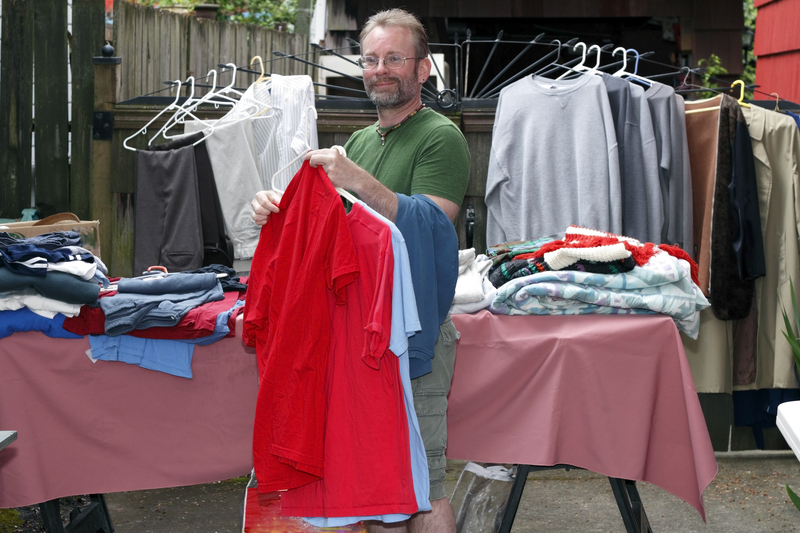Protecting Our Ecosystem by Correctly Disposing of PPE
Personal protective equipment (PPE) has been an essential tool in global health and safety, particularly during the COVID-19 pandemic. From masks and gloves to face shields and gowns, PPE helps safeguard individuals against exposure to viruses and hazardous substances. Yet, the surge in PPE usage has spawned a new environmental threat that urgently requires our attention. Improper disposal of PPE can devastate ecosystems, pollute air and water, and harm wildlife.
In this comprehensive article, we will examine the critical importance of proper PPE disposal, explore its effects on our environment, and outline sustainable practices every individual and organization can adopt. By correctly disposing of PPE, we all play a role in protecting our ecosystem for generations to come.
Understanding PPE and Its Environmental Impact
What is PPE?
The term Personal Protective Equipment (PPE) encompasses a variety of items, including:
- Masks (surgical, N95, cloth, etc.)
- Gloves (latex, nitrile, and other synthetic materials)
- Face shields and protective eyewear
- Gowns and full-body suits
- Shoe and hair covers
Why Has PPE Usage Skyrocketed?
The COVID-19 pandemic resulted in an exponential increase in PPE usage worldwide. Millions of individuals now rely on disposable masks and gloves in everyday situations--from grocery shopping to public transport. While this surge has protected countless lives, it has also produced an unforeseen side effect: a massive influx of single-use PPE waste.
PPE Waste: Environmental Challenges
Improper disposal of PPE leads directly to environmental damage. Discarded masks, gloves, and face shields often wind up in streets, parks, rivers, and oceans. A number of serious consequences include:
- Wildlife endangerment: Animals can mistake PPE for food, leading to ingestion, choking, or entanglement.
- Microplastic pollution: Many PPE items are made of polypropylene and other plastics that break down into microplastics, contaminating soil and water.
- Waterway blockages: Accumulated PPE can clog drainage systems and contribute to flooding.
- Harmful emissions: Incineration of PPE without proper controls can release toxic gases into the atmosphere.

Correct Disposal of PPE: Why It Matters
The Ripple Effects of Carelessness
When PPE is disposed of incorrectly, its impact extends far beyond the immediate environment. Microplastics from broken-down PPE enter the food chain, contaminating seafood and even drinking water. The presence of hazardous additives and pathogens on contaminated PPE also poses health risks not only to waste collectors but to the broader community. Proper PPE waste disposal is therefore not just a matter of cleanliness--but a public health imperative.
Ethical Responsibility Towards the Ecosystem
Each action we take with regard to PPE disposal reflects our ethical obligation to future generations. By learning how to dispose of PPE correctly, we are investing in a healthier, more resilient ecosystem. Our choices can protect biodiversity, preserve water quality, and ensure cleaner air for all species.
Best Practices for Disposing of PPE
Step-by-Step: How to Dispose of PPE Correctly
Whether you are an individual, business, or healthcare organization, following a systematic PPE disposal process is key to minimizing the environmental footprint of protective gear.
- Do not litter: Always place used masks, gloves, and other single-use PPE in designated waste bins, never on the ground or in natural settings.
- Use separate bins: If possible, segregate PPE waste from general household or business garbage to facilitate safer collection and disposal.
- Bag and seal PPE waste: Place used PPE in a tied plastic bag to prevent contamination and potential spread of germs.
- Do not recycle contaminated PPE: Standard recycling systems are not equipped to handle contaminated PPE items; improper recycling can endanger workers and spread disease.
- Follow local guidelines: Always adhere to municipality-specific instructions for PPE waste disposal, as procedures may vary.
- Wash hands: After handling or disposing of PPE, thoroughly wash hands with soap and water.
Disposal Tips for Different Types of PPE
- Masks and respirators: Cut the ear loops before disposal to prevent wildlife entanglement.
- Gloves: Remove without touching the outside surfaces, then dispose in a sealed bag.
- Face shields and goggles: If reusable, disinfect thoroughly. If not, dispose as non-recyclable waste.
For Healthcare and Business Organizations
Workplaces and medical facilities shoulder a higher burden regarding PPE waste management. Here are some organizational practices:
- Install clearly labelled PPE disposal bins in high-traffic areas.
- Train staff on safe removal and disposal procedures.
- Partner with certified hazardous waste management services when disposal volume is high.
Innovative Approaches to PPE Waste Reduction
Moving Towards Eco-friendly PPE
To reduce the environmental toll of disposable PPE, consider eco-friendly alternatives:
- Reusable masks and shields: Opt for fabric masks and face covers that can be washed and reused, lessening waste.
- Biodegradable PPE: Some manufacturers now offer biodegradable gloves and masks made from plant-based materials.
Recycling Initiatives
Despite the challenges, some specialized programs are exploring PPE recycling:
- Companies such as Terracycle offer PPE recycling boxes for businesses and schools.
- Researchers are piloting projects to convert used PPE into fuels, road-building materials, or composite products.
PPE Disposal Regulations and Recommendations Globally
Many governments and organizations have developed guidelines for disposing of PPE safely. While systems vary, common recommendations include:
- World Health Organization (WHO): Advises double-bagging used PPE and disposing of it with community waste in non-healthcare settings.
- U.S. Centers for Disease Control and Prevention (CDC): Recommends using lined trash cans and frequent handwashing after PPE disposal.
- European Environment Agency (EEA): Warns against adding disposable PPE to recycling streams and urges consumers to use correct waste bins.
The Role of Local Communities
Schools, businesses, and neighborhood groups can organize PPE waste education campaigns, distribute clear instructions, and provide sufficient disposal facilities. Community-level action is crucial in maintaining clean environments and robust public health.
The Dangers of PPE Pollution in Our Ecosystem
Threats to Wildlife
Numerous studies have highlighted the dire consequences of PPE pollution on wildlife, particularly birds, marine animals, and small mammals. Discarded masks and gloves can entangle legs, wings, or tails, causing severe injury, starvation, or death. Animals that ingest pieces of plastic PPE may suffer from internal blockages or poisoning from toxic chemicals.
Microplastic Proliferation
The plastics in PPE, including surgical masks and synthetic gloves, gradually break down into tiny fragments called microplastics. These particles are now found in soil, rivers, and oceans, threatening aquatic life, agricultural productivity, and even human health through the food chain.
Water and Soil Contamination
PPE waste discarded outdoors introduces synthetic fibers and chemical residues into water bodies and soil. This contamination can disrupt aquatic ecosystems, reduce soil fertility, and increase the load of pollutants that eventually reach our plates.
What You Can Do: Steps Towards Responsible PPE Use and Disposal
Be Informed and Spread Awareness
Understanding the importance and methods of safe PPE disposal is the first step towards making better choices. Educate others in your community, workplace, or school about the proper disposal process and the risks of littering PPE.
Choose Wisely and Minimize Waste
- Whenever possible, select reusable and washable PPE.
- Purchase only as much PPE as you actually need to avoid unnecessary waste.
- Be vigilant about picking up and properly disposing of PPE you see discarded in your community.
Support and Participate in Community Initiatives
Take part in organized cleanups or PPE waste reduction projects. Volunteer with groups setting up PPE collection points, or help distribute information about proper disposal practices.

Toward a Greener Future: Policy, Innovation, and Public Engagement
The Role of Governments and Organizations
Policymakers can advance environmentally responsible PPE management by:
- Mandating proper labeling on PPE packaging with disposal instructions.
- Funding research into biodegradable and recyclable PPE alternatives.
- Encouraging manufacturers to adopt eco-friendly production processes and take-back programs.
- Investing in waste management infrastructure equipped to handle both infectious and non-infectious PPE.
Technological Innovation for PPE Management
The challenge of PPE waste provides opportunities for innovation:
- Research into advanced materials that are both protective and biodegradable.
- Development of automated sorting and sanitation systems for PPE waste.
- Data-driven monitoring of litter hotspots to guide targeted clean-up efforts.
The Power of Individual Action
While systemic change is essential, every person's efforts matter. By correctly disposing of PPE, reducing single-use item reliance, and holding our leaders accountable for sustainable policy, we can help heal our planet's ecosystems.
Conclusion: Ensuring Ecosystem Health Through Responsible PPE Disposal
Our planet's ecosystems are interconnected, and even seemingly small actions--like tossing a mask in the proper bin--can have far-reaching effects. The widespread adoption of PPE may have been necessary in a time of public health crisis, but it need not result in an environmental one.
By embracing smart, responsible PPE disposal practices, supporting innovation, and spreading awareness, we can protect wildlife, maintain clean waterways, and sustain the beauty and health of our shared home. Remember: Protecting our ecosystem by correctly disposing of PPE is not just a recommendation--it is a vital responsibility that each of us carries, for today and for the future.
Together, let's keep our environment safe and thrive in harmony with nature by always disposing of PPE correctly.
```